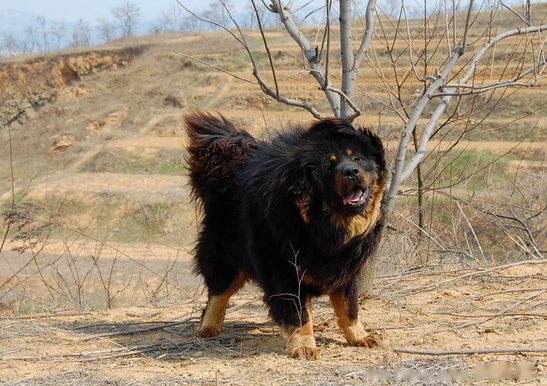1. Strength training is the basis of Tibetan Mastiff physical training, and it is also an important indicator to test its competitive level. Strength is the ability to overcome external resistance or resist external forces through muscle movement. It includes maximum strength training, speed strength training, strength endurance training. [Tibetan Mastiff strength training]

1. Resistance training is the premise of developing strength, Only under the premise of carrying a certain weight, strength training can improve strength quality. Moderate load {70% of maximum load} works best {not easy to fatigue}. If you have a certain level of training, you can use a combination of maximum load and medium load training methods, using weight gain method and weight loss method, {day training, first increase and then decrease, accumulate over time, from light to heavy, use high intensity, repeat Training methods with few repetitions} The repetitions should not be too many to avoid excessive fatigue caused by excessive exercise. [Strength training for Tibetan Mastiff]
2. The method of developing speed and strength is to use medium load, fast speed and multiple times. It is required to exert the greatest strength in the shortest time. The speed of movement is determined by the nature of the developing strength qualities. Developing explosive power requires an emphasis on rapid contraction of the overall muscle {explosive power = strength * speed}. When developing explosive power, it is advisable to use a small load for fast exercise training methods, which can allow Bit to perform weight-bearing jumping, back-and-forth running and other training.
3. To develop strength and endurance, use a small load, 60% of the maximum load is appropriate. When training, do not seek speed, but only seek times, time, and distance. Pulling iron chains, dragging tires, running with weight, etc. are all items of strength and endurance training, mainly training the stamina of the overall strength of the Tibetan Mastiff. [Tibetan Mastiff Strength Training]
4. Appropriate frequency and frequency, The part and the whole want to combine. Strength training is best if you train every other day. [Tibetan Mastiff Strength Training]
5. Young Tibetan Mastiffs mainly develop speed and strength {pay attention to age, male and female characteristics} Do more active strength training, and medium and small strength load training is better. Try to avoid high-intensity, high-load stimulating training.
6. The growth rate of strength should not be too fast. The fast-growing strength can be maintained for a short time and fades quickly, while the slow-growing strength can exert a high level and maintain a long time. Maximum strength training once a week That's it.
2. Training methods: Strength training is mostly carried out in a combination of dynamic and static methods, with dynamic training as the mainstay. [Strength training for Tibetan mastiffs]
1. Dynamic training: To develop hind limb strength and bite force, it is necessary to emphasize the speed and frequency of movements.
2. Static training, improve absolute strength, and train with maximum weight load. The low-altitude chain stimulates the Tibetan mastiff, and it is better to stretch the chain with the Tibetan mastiff. [Strength training for Tibetan Mastiff]
![[Dog Training 5] The training method of pet dog dining etiquette](/static/img/12192/12192_1.jpg)




